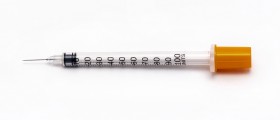
For this reason, plasma donation has become fairly common. Plasma so it can be either gathered at one place and used when someone needs it, or it can be given to a friend or a family member in need in the form of a directed donation. Because of the nutrients it contains, plasma is also used to manufacture certain medications.
Donating plasma: What do you need to know?
A person can donate several things in order to help others. It can be blood, sperm, bone marrow, and plasma. Donating plasma is not only an easy way to earn some money, it is also a noble and selfless act. The process of donating plasma is very much the same as a blood donation. The donor comes into a medical facility specialized for this service, fills in a few forms and then has his or her blood drawn. The blood is then processed. It is separated from its other constituents and the plasma is preserved in controlled conditions so it can be used later on.
People who are considering plasma donation should be aware that this noble act does come with a few undesired side effects. If you have been wondering if you can and should donate plasma, what should you know?
Side effects of donating plasma
One of the more obvious side effects of plasma donation, which also occurs during blood donation, is fatigue, or feelings of weakness. It is only logical that some people feel tired after donating plasma, because the amount of the blood drawn from the body is not exactly small. It is recommended to avoid physical stress and vigorous activity after donating plasma.
Another potential side effect of donating plasma is nausea, possibly with vomiting. This side effect usually passes in an hour or two after the blood has been drawn.
Dizziness or lightheadedness is commonly observed in people who have just donated plasma. A person who donated plasma may experience vertigo, loss of balance and inability to walk straight. If this happens, it helps to sit or lay down for a few minutes until the feeling is gone. This side effect does not require any particular treatment, but it can help to rest, sip some water and breathe fresh air. Donors will, however, typically be given some juice and a cookie or similar sugar-filled treat to help them recover from the donating by boosting their blood sugar levels.
Minor bruising is usually seen at the site where the blood was drawn for plasma donation. It occurs because the skin breaks when the needle is inserted in the vein and some blood escapes in the layers underneath the skin surface. Like any other bruise, bruises caused by blood drawing goes away in a few days. Sometimes, although very rarely, donating plasma can cause scarring at the site.
Donating plasma on regular basis is a different story with different side effects. Plasma cannot be donated more than twice a week, with a 48 hour gap between two donations. Some of the side effects associated with donating plasma regularly can include seizures, difficulty breathing, abdominal pain, vomiting, a skin rash (often associated with the antiseptics used to clean the skin), and hives.

















Your thoughts on this
Loading...